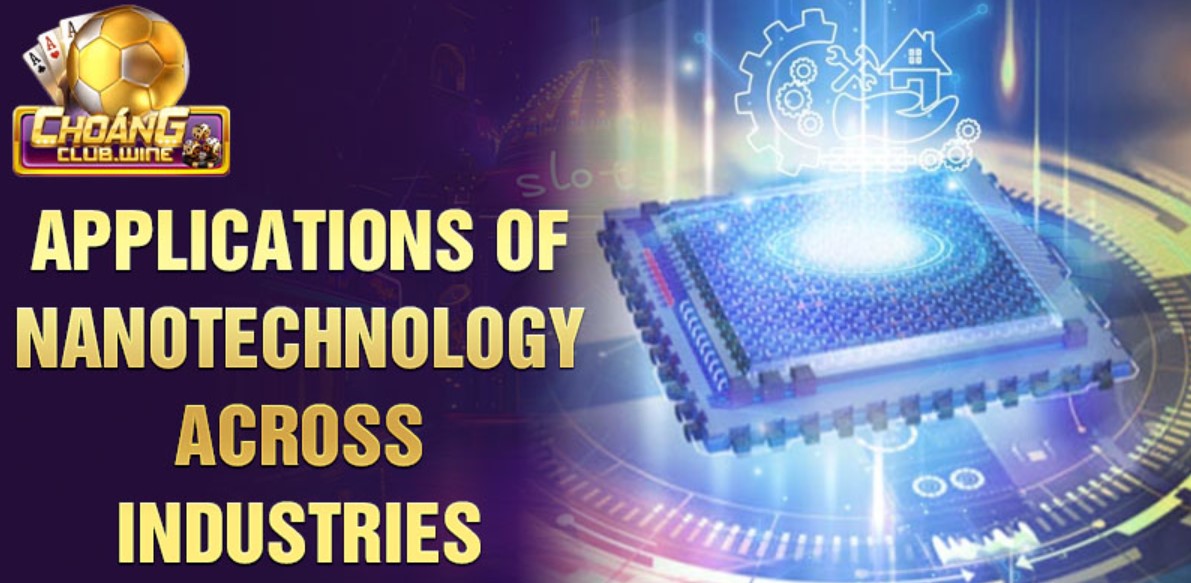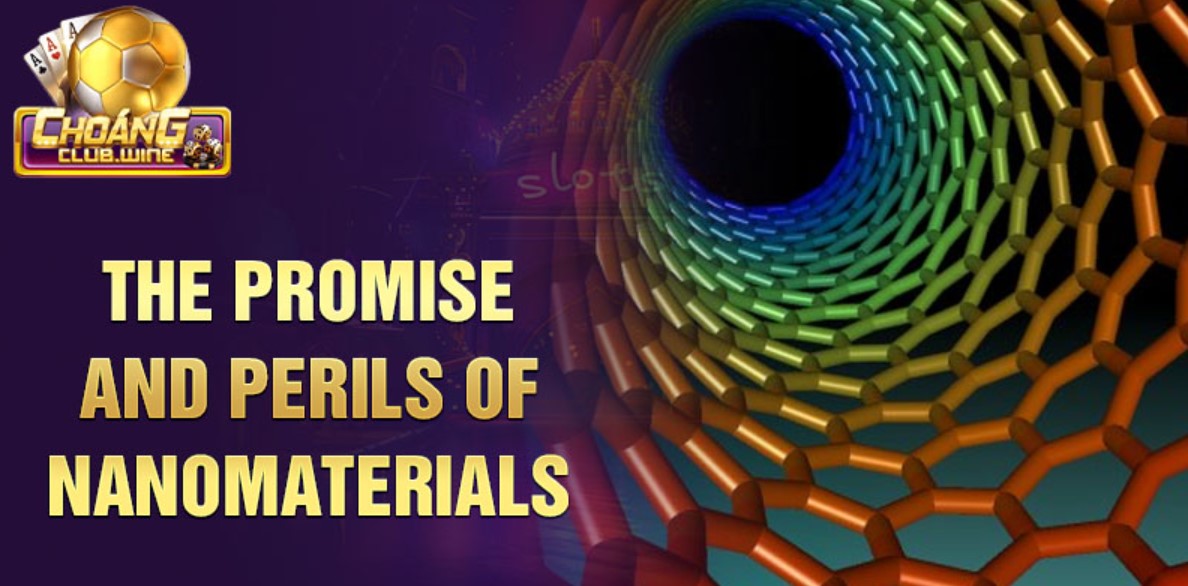Nanotechnology, simply put, is the ability to shape and control individual atoms and molecules to create materials and devices with unprecedented properties. At the nanoscale, the familiar laws of physics begin to behave differently, opening up a whole new world of possibilities. At Choang Club, imagine a future where we can design and engineer materials atom by atom, revolutionizing industries from medicine to energy production.
The Birth of a Nanoscale Revolution
The concept of nanotechnology was first conceived in 1959 by renowned physicist Richard Feynman in his famous lecture, “There’s Plenty of Room at the Bottom.” Feynman envisioned a future where scientists could manipulate matter at the atomic level, creating new materials and devices with astonishing properties.
However, it wasn’t until the 1980s that the development of powerful microscopes, such as the scanning tunneling microscope (STM) and the atomic force microscope (AFM), made it possible to visualize and manipulate individual atoms, paving the way for the birth of the nanot-echnology revolution.
Nanotechnology’s Multifaceted Applications
Nano-technology has already begun to revolutionize numerous industries, from medicine and electronics to energy and manufacturing. This burgeoning field offers a glimpse into the vast potential of manipulating matter at the nanoscale:
Medicine
Nanotechnology is transforming the way we diagnose, treat, and prevent diseases. Nanoparticles can be designed to deliver drugs directly to cancerous cells, minimizing side effects and enhancing therapeutic efficacy. Nano-coated medical implants can become resistant to bacterial infection and biocompatible with the body. Nanomaterials are being investigated for their ability to repair damaged tissues, regenerate organs, and even combat viruses and bacteria.

Nanotechnology’s multifaceted applications
Electronics
The demand for smaller, faster, and more efficient electronics is insatiable. Nano-technology is rising to the challenge, enabling the development of ultra-compact transistors, energy-efficient batteries, and flexible displays. Nanowires and quantum dots are paving the way for the next generation of computers and consumer electronics.
Energy
Solving the global energy crisis requires innovative solutions. Nano-technology is playing a pivotal role in developing cleaner and more efficient energy sources. Solar cells incorporating nanomaterials can capture more sunlight, enhancing energy output. Nano-catalysts can improve the efficiency of fuel cells and batteries, reducing reliance on fossil fuels.
Manufacturing
Nanotechnology is enabling the production of stronger, lighter, and more durable materials. Nanocomposites, comprised of nanoparticles embedded within a matrix material, enhance the strength and properties of plastics, metals, and ceramics. Nanomaterials can also be used to create self-cleaning surfaces, anti-corrosion coatings, and water-resistant fabrics.
Applications of Nanotechnology Across Industries
Nano-technology is a field that spans a wide range of industries, each with its own unique challenges and opportunities. Let’s delve deeper into the transformative potential of nano-technology in various sectors.
Revolutionizing Medicine
Nanoparticle-based Drug Delivery
One of the most promising applications of nano-technology in medicine is the development of nanoparticle-based drug delivery systems. Nanoparticles can be engineered to target specific cells or tissues, delivering therapeutic agents directly to the site of disease. This approach can improve the efficacy of drugs while reducing side effects, as the nanoparticles can bypass healthy cells and tissues.
Nanomaterials for Tissue Regeneration
Nano-technology is also paving the way for advanced tissue regeneration and repair. Nanomaterials can be designed to mimic the natural extracellular matrix, providing a scaffold for cells to grow and proliferate. These nanomaterials can be used to engineer artificial organs, repair damaged tissues, and even stimulate the body’s own regenerative processes.

Applications of nanotechnology across industries
- Nanofibrous scaffolds for bone, cartilage, and skin regeneration
- Nanoparticle-based hydrogels for nerve and muscle tissue repair
- Nanocomposites for the development of artificial organs and implants
Revolutionizing Electronics
Nanoelectronics and Miniaturization
The relentless pursuit of smaller, faster, and more efficient electronics has driven the development of nanoelectronics. Nano-technology enables the fabrication of ultra-compact transistors, logic gates, and memory devices, paving the way for the next generation of computers, smartphones, and other electronic devices.
- Graphene and carbon nanotubes for high-performance transistors
- Quantum dots and nanowires for advanced optoelectronics
- Nanoelectromechanical systems (NEMS) for sensing and actuation
Energy-Efficient Nano-technology
Nano-technology is also revolutionizing the energy sector, with advancements in energy storage, conversion, and conservation. Nanomaterials can be utilized to create more efficient solar cells, fuel cells, and batteries, reducing our reliance on fossil fuels.
- Nanostructured materials for high-capacity lithium-ion batteries
- Nano-engineered catalysts for improved fuel cell performance
- Quantum dot-based solar cells with enhanced light absorption
Revolutionizing Manufacturing
Nanocomposites and Advanced Materials
Nanotechnology is enabling the development of stronger, lighter, and more durable materials through the use of nanocomposites. By incorporating nanoparticles or nanofibers into a matrix material, the resulting nanocomposites exhibit enhanced mechanical, thermal, and electrical properties.
Nanomanufacturing Techniques
The ability to manipulate matter at the nanoscale has also led to the development of advanced manufacturing techniques. These techniques, such as 3D printing and molecular self-assembly, allow for the precise fabrication of complex nanostructures and devices.
The Promise and Perils of Nanomaterials
While the potential benefits of nanotechnology are undeniable, the development and use of nanomaterials also present significant ethical and environmental challenges that must be addressed.
Toxicity Concerns
One of the primary concerns surrounding nanomaterials is their potential toxicity. The small size and unique properties of nanoparticles can make them more reactive and potentially harmful to human health and the environment. The long-term effects of exposure to various nanomaterials are still not fully understood, and extensive research is underway to assess their safety.
Environmental Impact
The widespread use of nanomaterials also raises concerns about their potential environmental impact. Nanomaterials may accumulate in the environment, disrupt ecosystems, and pose threats to wildlife. Proper disposal and containment strategies are crucial to mitigate the environmental risks associated with nanomaterials.

The promise and perils of nanomaterials
Accessibility and Affordability
Another concern is the potential for nano-technology to exacerbate social and economic inequalities. The high cost and complexity of developing and manufacturing nanomaterials may limit their accessibility, particularly in developing regions. Ensuring equitable access to the benefits of nano-technology is a crucial consideration for the future of this field.
Nanotechnology in Healthcare: From Diagnosis to Treatment
Nano-technology is revolutionizing the healthcare industry, from the way we diagnose diseases to the methods we use to treat them.
Nanodiagnostics and Early Detection
Nanomaterials can be designed to detect the presence of specific biomarkers or pathogens with high sensitivity and specificity, enabling early diagnosis of diseases. Nanodevices, such as nanobiosensors, can be used to monitor physiological processes or detect the onset of diseases, allowing for timely intervention.
Targeted Drug Delivery and Nanotherapeutics
Nanoparticles can be engineered to encapsulate and deliver therapeutic agents directly to the site of disease, improving the efficacy of treatments while minimizing side effects. These nanotherapeutics can be designed to target specific cells or tissues, enhancing the selectivity and potency of the delivered drugs.
Tissue Engineering and Regenerative Medicine
Nano-technology is also paving the way for advanced tissue engineering and regenerative medicine. Nanomaterials can be designed to mimic the natural extracellular matrix, providing a scaffold for cells to grow and proliferate. These nanomaterials can be used to engineer artificial organs, repair damaged tissues, and even stimulate the body’s own regenerative processes.
The Future of Nanotechnology: Innovations on the Horizon
As research and development continue, we can expect to see even more transformative applications of nano-technology, shaping the future of various industries and our everyday lives.

The future of nanotechnology: innovations on the horizon
Artificial Intelligence and Nanobots
Scientists envision a future where nanobots, tiny robots made of nanomaterials, can perform complex tasks within the human body. These nanobots could deliver drugs, repair tissues, and even combat diseases at the cellular level, revolutionizing healthcare and potentially leading to the eradication of many illnesses.
- Nanoscale sensors and actuators for in vivo diagnostics and treatment
- Swarms of nanorobots for targeted drug delivery and disease intervention
- Hybrid systems integrating nano-technology and artificial intelligence
Nanotechnology and Space Exploration
Nano-technology can also enable new approaches to space exploration, facilitating the development of lighter, more efficient spacecraft, self-repairing materials, and energy-efficient systems. This could pave the way for ambitious missions, such as the establishment of lunar bases and human expeditions to Mars.
- Nanocomposite materials for lightweight and durable spacecraft
- Nanoscale sensors and devices for in-situ resource utilization on other planets
- Nanoscale power generation and storage technologies for space applications
Conclusion
Nanotechnology, a revolution in miniature, is transforming our world, atom by atom. From revolutionizing medicine and electronics to enabling sustainable development, this burgeoning field has the potential to address some of the most pressing challenges faced by humanity. As we continue to push the boundaries of scientific exploration and technological innovation. Don’t miss out! Đăng Ký Choang Club to stay updated on the latest information.





